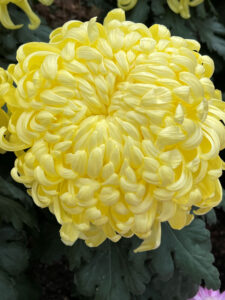Chrysanthemums, often affectionately called “mums,” are flowers of remarkable beauty and cultural significance that have captured the hearts of people across the world for centuries. Their rich history is a tale of beauty, elegance, and meaning, making them an enduring symbol of love, honor, and longevity.
Chrysanthemums are native to China, where they have been cultivated for over 2,500 years. It is believed that Confucius himself was a great fan of these lovely flowers and was known to speak of them in his teachings. The chrysanthemum, or “Chu” in Chinese, represents various virtues, including longevity, and it is often featured in ancient Chinese art, poetry, and folklore.

By the 8th century, chrysanthemums made their way to Japan, where they quickly gained popularity. They became the symbol of the Japanese imperial family and are known as the “Emperor of Flowers.” Chrysanthemums in Japan are celebrated during the Chrysanthemum Festival, or “Kiku no Sekku,” held annually in September. The intricate and artistic practice of growing chrysanthemums to resemble various shapes and figures, known as “kiku ningyo” or chrysanthemum dolls, is a cherished tradition during this festival.
Europeans first encountered chrysanthemums in the 17th century when they were introduced by botanists and explorers. The flower’s name, “chrysanthemum,” derives from the Greek words “chrysos” (gold) and “anthemon” (flower), reflecting the rich golden hues of the original wild chrysanthemum species.
In the 19th century, chrysanthemums gained immense popularity in Europe, especially in France and England. They were embraced as symbols of love and friendship, and their presence in the gardens of Victorian-era estates became a testament to their enduring appeal.
During the late 19th and early 20th centuries, chrysanthemums also made their way to the United States, where they quickly found a special place in American hearts. They were embraced by garden enthusiasts and soon became a beloved fall flower, symbolizing hope and joy during the autumn season.
Over time, chrysanthemums have diversified into various species, shapes, and colors, thanks to careful breeding and hybridization. They can be found in an array of colors, including white, yellow, pink, lavender, and red. The wide variety of forms, from the classic daisy-like blooms to more elaborate pompons and spiders, offers a broad range of choices for gardeners and floral enthusiasts.
Beyond their aesthetic beauty, chrysanthemums hold deep cultural and symbolic significance around the world. In Asia, they continue to symbolize long life and good luck. In many cultures, they are a symbol of honor and respect and are often placed on memorials or used in funerals.
In modern times, chrysanthemums are used for various purposes, from adorning gardens and floral arrangements to medicinal applications in traditional Chinese and Japanese medicine. They are also popularly featured in tea, where their pleasant aroma and potential health benefits are enjoyed.
The chrysanthemum’s remarkable history as a symbol of beauty and cultural significance makes it more than just a flower. It is a testament to the enduring human fascination with nature’s wonders and our desire to find deeper meanings in the world around us. As we continue to cultivate and admire these enchanting blossoms, we pay homage to the chrysanthemum’s long and splendid journey through time. In their elegant petals and intricate varieties, we find a mirror reflecting the changing seasons and the timeless beauty of the natural world.
